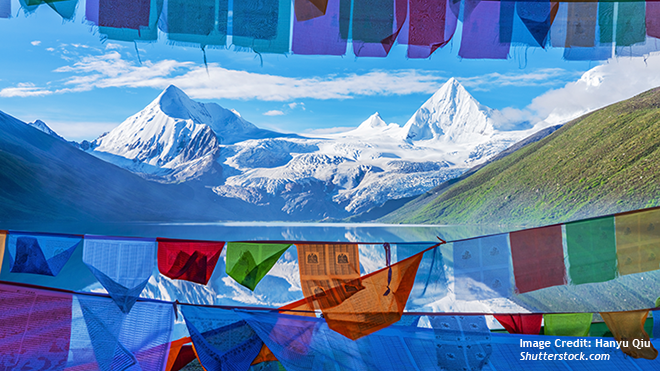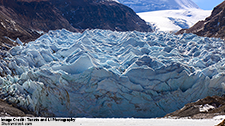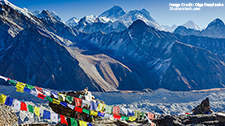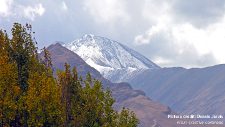Does Anyone Care About the Climate Crisis in Tibet?

Jagannath Panda
In early January, a powerful 6.8 magnitude earthquake struck the remote Dingri county (Shigatse) on the Tibetan Plateau, generating thousands of aftershocks within the first three days. The ripple effects were felt in neighboring Bhutan, India, and Nepal. It was the most severe earthquake to impact the Himalayan region in the past century. Consequently, media observers have argued that this natural disaster may serve as an indicator of the deleterious effects of China’s unsustainable exploitation of Tibetan ecological resources to satisfy its domestic developmental imperatives.
Days before the earthquake, in late December, China had announced plans to build one of the largest hydro-projects on Tibet’s Yarlung Tsangpo River, triggering strong opposition from neighboring Himalayan states and the Tibetan community. Beijing’s relentless pursuit of large-scale infrastructure projects in Tibet—under the guise of economic development—is exacerbating the region’s environmental fragility. Critics argue that such projects, particularly in an ecologically sensitive and seismically active zone, not only threaten local ecosystems but may also contribute to heightened seismic risks. The question, then, is whether China’s unchecked exploitation of Tibet’s natural resources is not just an environmental crisis in the making, but a direct catalyst for disaster.
In this context, the Dalai Lama has always been a forward thinker. He has over the years been tirelessly campaigning about the dangers of playing with natural forces or disturbing greatly the ecological balance of the high mountains of Asia, including China. Even against the background of suffering due to the Dingri earthquake, the Dalai Lama not only offered prayers but also invoked “the Buddhist spirit of seeking to transform adverse circumstances into an opportunity for growth and thus a stage on the path to enlightenment.” However, in light of the Dalai Lama’s long-standing climate advocacy, the words “opportunity,” “growth,” and “path to enlightenment” should not be interpreted narrowly—whether in purely economic or religious terms. Instead, they must be understood within the broader context of sustainable development, ecological responsibility, and ethical governance in Tibet as a way to course correction. Primarily, this refers to protecting the endangered “Third Pole”—the largest frozen mass on the planet after the North and South poles— and coalescing an international community to resist human mis-actions, including over-damming, over-mining, and over-harnessing of Himalayan resources.
But does the Dalai Lama, who retired from active politics in 2011, have the world’s ears? In the constant din of perpetually advancing technological needs, does the world even care for his philosophy on nature/environment? More so, what are the Dalai Lama’s solutions for climate action? In what ways are the multiple crises for Tibetan culture and religion impacting climate change? What is the current impact of China’s role as an “occupier”? What will it take for the United Nations’ climate forums not to overlook the cultural, religious, and societal aspects of climate damage in Tibet?
Read the full piece in The Diplomat published on February 12, 2025 here.
Related Publications
-
PRC Mining in Tibet – a European Perspective
Given the enormous geostrategic and environmental importance of the Tibetan Plateau, what the People’s Republic of China (PRC) does with Tibet’s waters and its minerals does not concern the PRC […]
-
Report of the Webinar on China’s Rapacity for Mining Tibetan Resources: When Will the Greed End? (Climate Crisis in Tibet-III)
The webinar titled “China’s Rapacity for Mining Tibetan Resources: When Will the Greed End?” was the third in a webinar series on the Climate Crisis in Tibet, organized by the […]
-
Report of the Webinar: Climate Crisis in Tibet – Part I: CCP’s Tibet Takeover: Wither Global Climate Action?
This report is an outcome of the webinar titled “Climate Crisis in Tibet”, organized by the Stockholm Center for South Asian and Indo-Pacific Affairs (SCSA-IPA) at the Institute for Security […]
-
Climate Meltdown in Tibet: Global Recognition Still Missing
The Tibetan Plateau covers approximately 2 percent of the planet, the size of Western Europe, with more than half of the area over 4000 m above sea level. It is […]
-
Going for Gold on the Tibetan Frontier
In 2025, China is hungrier than ever for gold, as an abiding holder of accumulated wealth, in a time when even the biggest Chinese real estate builders, tech entrepreneurs, exam […]



